From Ancient times to the modern revival of the Olympic Games, there have been many significant events and amazing stories associated with the Olympics. The ancient and original Olympic Games were based in Greece, as was the first of the modern Games. Following that, the Olympics were hosted by cities around Europe, but now the magic of the Olympics has reached all parts of the globe.
For anyone interested in the history of the Olympic Games, there are many places where important Olympic events occurred that you can visit to relive some of those magic moments. Here are 10 places we think you should put on your bucket list to visit one day.
1. Olympia, Greece - site of the Ancient Olympics
What better place to start a tour of the world's Olympic historic sites than the birthplace of the Olympics themselves? Olympia is the home of the ancient Olympic Games. Olympia is located near the western coast of the Peloponnese peninsula of southern Greece, 10 miles (16 km) inland. The quickest and easiest way to get from Athens to Olympia is by car: Olympia is a 3.5-hour drive (approximately 250-300 KM) away from Athens. You need a full day to explore these ruins and immerse yourself in the palpable history of the ancient Olympics.
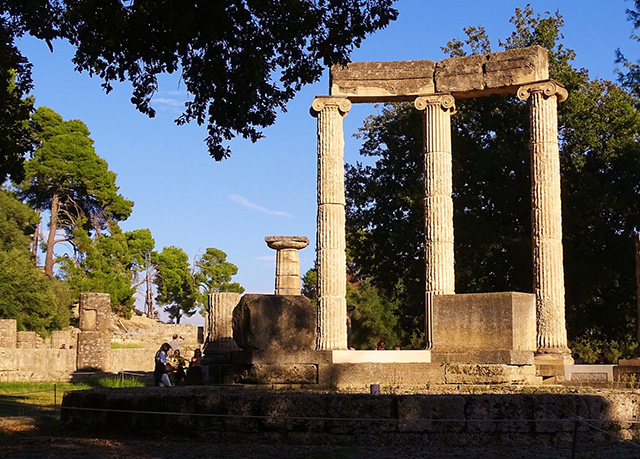 The ruins of Olympia, Greece
The ruins of Olympia, GreeceThere are several sites and museums located in Olympia. The Archaeological Museum of Olympia, the Archaeological Site itself, the Museum of the History of the Olympic Games in Antiquity, and the Museum of the History of Excavations in Olympia. Immersing yourself in the history and ruins is one of the best things to do in Olympia in Greece.
2. Panathenaic Stadium, Athens
There are many places associated with the Olympics located in and around Athens, but the most iconic would be the Panathenaic Stadium, home of the first modern Olympic Games in 1896. The Panathenaic Stadium is a beautiful white marble structure, the only stadium in the world made entirely of marble. You can walk or run around the track if you like, in the footsteps of many Olympic athletes. The stadium was used for the 1896 Olympics, and also hosted the archery events, and was the finishing line for the marathon in 2004.
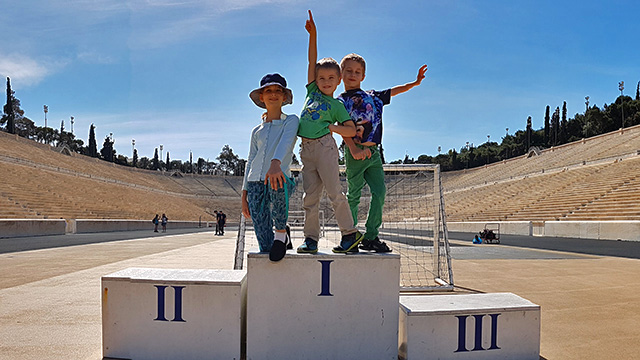 Everyone is a winner
Everyone is a winnerA little hidden away through the athlete's entrance tunnel is a small interesting museum displaying the posters of all the modern Olympics as well as the official torches used to carry the Olympic flame and other Olympic memorabilia. There is a small entry fee, which includes an audio guide available in 11 languages. A short walk away is the Zappeion, home of the Olympic Village in 1906. If you want to travel more in this region, maybe look to visit the city of marathon, but probably don't run there.
3. Paris - home of the 1900, 1924, and 2024 Olympics
Exploring the old Olympic sites in Paris offers a fascinating journey through sporting history. Paris was the first city to host the Games twice, and was host again in 2024. In 1900, The Vélodrome de Vincennes held the majority of the sporting events, and was used again in 1924 to host the cycling events. The stadium, now called Stade-Vélodrome Jacques Anquetil, is still used for cycling, football and rugby matches. Another stadium that is still in use and worth visiting is the iconic Stade Olympique de Colombes, which served as the main venue for the 1924 Summer Olympics.
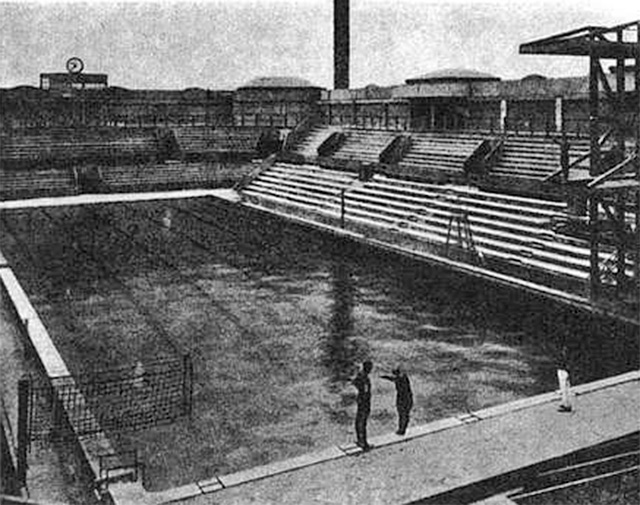 Piscine des Tourelles
Piscine des TourellesYou cannot miss the River Seine, where the swimming events were famously held in 1900. In 1924, swimming took place at the Piscine des Tourelles. If you are going to follow in the footsteps of the early Olympians, you are far safer going for a swim at the piscine rather than taking a dip in the Seine.
4. Los Angeles Memorial Coliseum, California, USA - Site of the 1932, 1984 and 2028 Olympic Games
The Los Angeles Memorial Coliseum has been a part of both LA Olympics in 1932 and 1984. It hosted the sports of athletics, equestrian (eventing, jumping), field hockey and gymnastics. In 1984, the stadium hosted the opening and closing ceremonies plus the athletics track and field events. Los Angeles Memorial Coliseum is the planned site for the opening ceremony and athletics events in 2028 when the Olympics return to the city for the third time.
 Los Angeles Memorial Coliseum
Los Angeles Memorial ColiseumThe stadium is located in Exposition Park, at 3911 S. Figueroa Street, Los Angeles, just one block south of the University of Southern California. It is also accessible using several public transport routes including Metro light rail and bus lines. When we inquired about visiting the LA stadium on a visit to the US, the tourist office advised us that it was not in a safe part of town for tourists to visit, so check first. The best way to experience the stadium would be to join the 75-minute historic walking tour of the stadium.
5. Olympic Stadium and village, Berlin, Germany 1936 Olympics
The 1936 Berlin Olympics is of great interest to all Olympic historians, not only because of the Nazi propaganda and controversy, but also the remarkable achievements of athletes such as Jesse Owens. The Olympiastadion hosted the athletics events, as well as equestrian (jumping), football (final), and handball (final). You can visit for free and take a look around at your leisure, though there are some areas you cannot visit without a professional tour guide. You can also purchase tickets for the nearby Bell Tower (Olympia-Glockenturm) to get an incredible view of both the venue and the city of Berlin. Taking a train to the site is recommended.
 Olympiastadion Berlin
Olympiastadion BerlinFor those interested in Athlete Village history, the Berlin Village still exists today, a 20-minute train ride west of Berlin outside the small town of Elstal. Many of the accommodation bungalows are derelict, though much of the other infrastructure remains, such as the dining area, the athletics track and a museum in one of the bungalows.
7. Munich's Olympic Park, Germany
The main sporting events for Munich's Olympic Games in 1972 were held in an area called Olympiapark München, the main stadium being the Olympiastadion where the opening and closing ceremonies, athletics, equestrian, part of the modern pentathlon and the football final match took place. Located in the Oberwiesenfeld neighborhood of Munich, there are many public transport options to get you there, and parking also also available on-site.
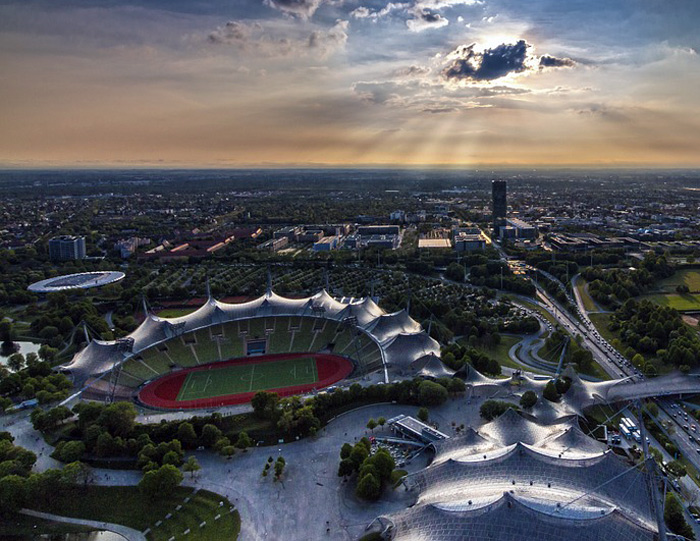 Munich Olympic Park
Munich Olympic ParkA behind-the-scenes tour of the park is a popular choice for sports fans. Going with a guide grants you access to areas often closed to the public, including the stadium and Olympic swimming pool where Mark Spitz once won 7 gold medals in 1972. The more daring may also want to try the Roof Climb Tour or flying fox for a different view of the stadium and surrounding area.
8. Bird's Nest and Watercube, Beijing China
The buildings most synonymous with the Beijing Olympic Games in 2008 were affectionately known as the Bird's Nest (national stadium) and Water Cube (national aquatic center), both located in the Olympic Green, part of the cluster of sporting stadiums in Beijing. The best way to get there is by public transport. The best time to visit is at night, when the lighting shows their true beauty and it will also be much cooler in summer. You can just enjoy the outside of these iconic buildings, or join the crowds to peek inside.
 China Birdsnest
China Birdsnest9. Barcelona, Spain
The Olympic Village for the Barcelona Olympic Games in 1992 was built to house athletes, but the long-term effect was revitalizing are urban area creating a modern residential neighborhood with new beaches, large gardened areas and public facilities. One of the best ways to see this legacy of the Olympic Games is to stroll or play in many of the green areas, or head to the Port Olímpic to visit one of the many bars and restaurants.
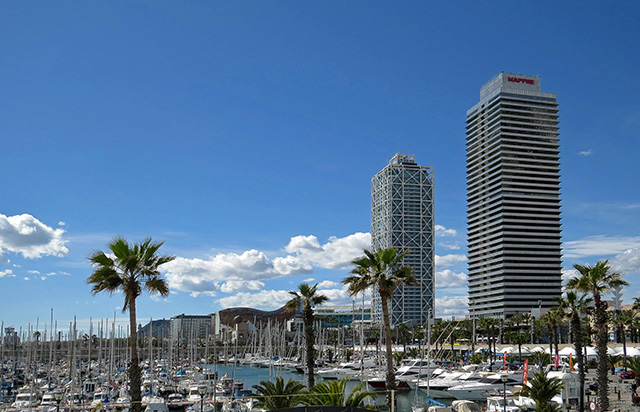 Barcelona Port Olímpic
Barcelona Port Olímpic 10. Melbourne Cricket Ground (MCG), site of the 1956 Olympic Games
The Melbourne Cricket Ground is an iconic cricket ground, but was also the main stadium for the 1956 Olympic Games in Melbourne. Apart from athletics, the stadium was also used for the soccer finals, the hockey finals, the Opening and Closing Ceremonies and an exhibition game of baseball, which a crowd of 102,000 attended. The best way to experience this world-class stadium is to go to a cricket game or an Australian football match. A tour of the MCG includes the must-see Australian Sports Museum which includes the original Olympic flame and a lot of other Australian sporting history.
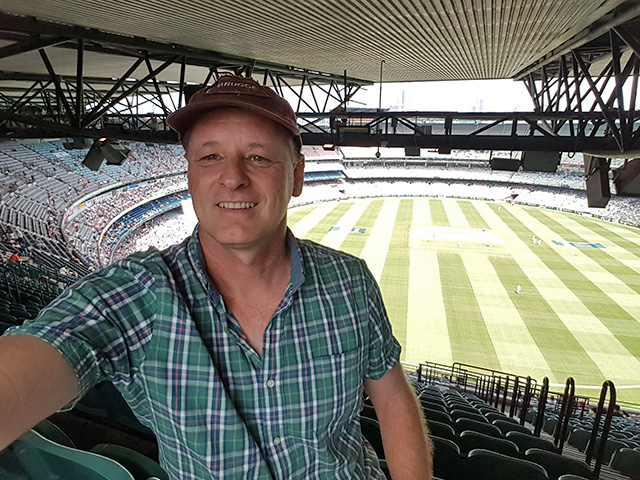 the author visiting the MCG
the author visiting the MCGWhere Else?
Any Olympic buff should also include on their world tour the Olympic Museum in Lausanne, Switzerland. It is the official museum of the IOC, located on the banks of Lake Geneva and houses exhibits over three floors covering almost everything you can think of regarding the Olympics.
Related Pages
- History of the Olympic Games
- History of the Olympic Villages
- About the Ancient Olympic Games
- 7 Wonders stadiums
- Olympic Stadiums of the Modern Games.
- History of the Athlete Villages


 Current Events
Current Events